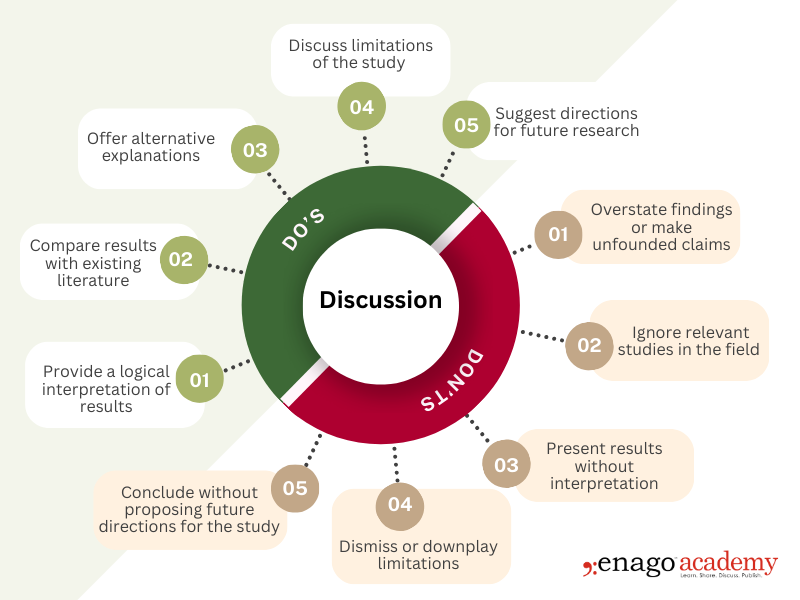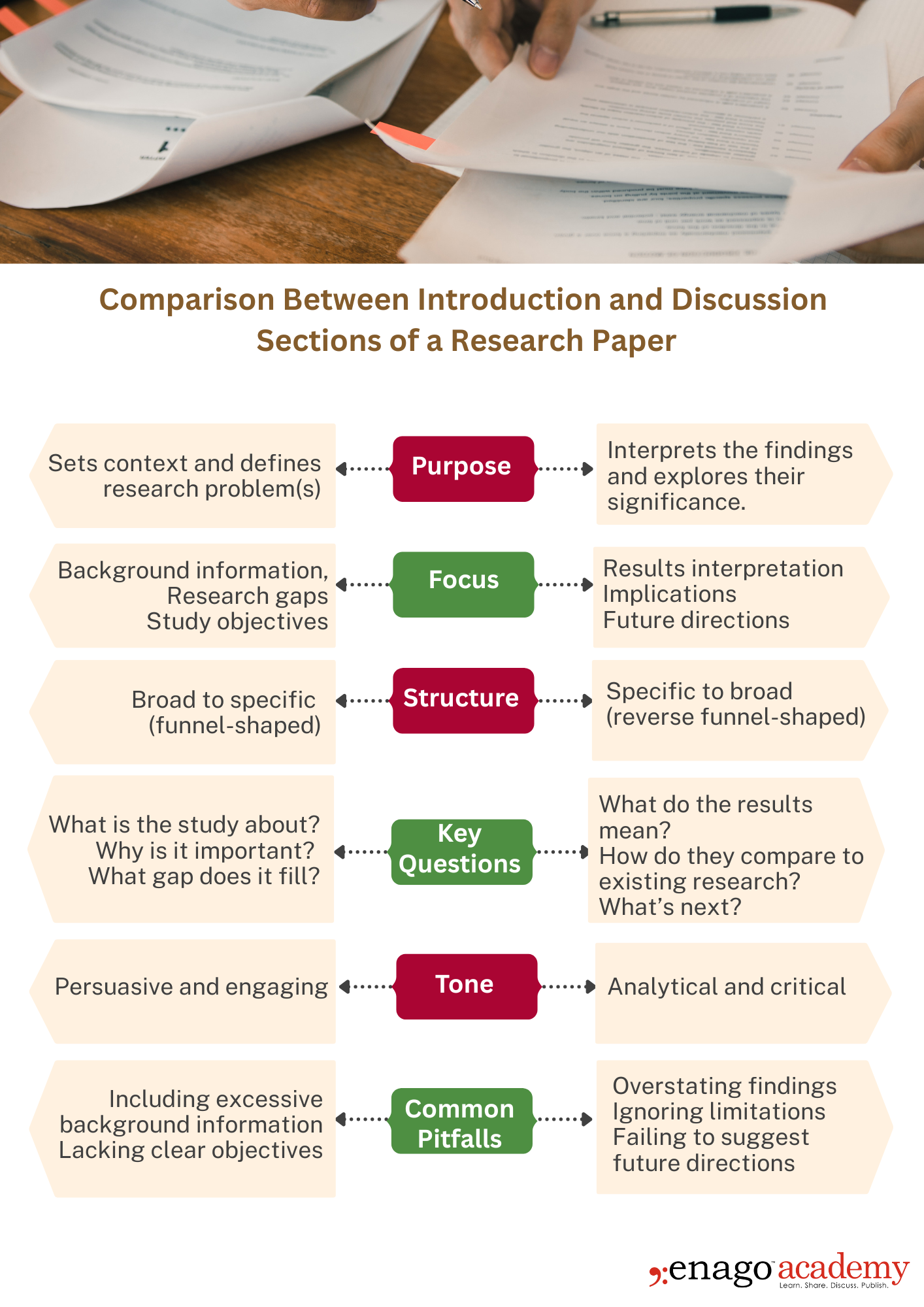Comparing Introduction and Discussion: Key Differences
Best Practices for Writing the Discussion Section
 By structuring the Discussion section effectively, authors can ensure that their findings fit in the broader academic conversation.
By structuring the Discussion section effectively, authors can ensure that their findings fit in the broader academic conversation.
Ask yourself the following questions while you are working on the Discussion section of your research article:
- What are the main findings of the study? How do these findings address the research question presented in the Introduction?
- How do the findings compare to previous research? Do they support, contradict, or expand on existing studies?
- What are the possible explanations for the results? Are there any alternative interpretations for contradictory results?
- What are the implications of these findings? How do the results contribute to the field, practice, and/or policy?
- What are the limitations of the study? Are there any methodological constraints, biases, or areas where caution is needed?
- What questions remain unanswered, and what should future studies explore?
Comparing Introduction and Discussion: Key Differences
While both these sections play a crucial role in structuring a research paper, their functions are distinct. The Introduction leads the reader into the study, while the Discussion provides closure by interpreting results and their broader impact. Understanding these differences helps authors write clear and impactful manuscripts.
 The Introduction and Discussion sections are critical to a research paper’s success. By following the structure and maintaining clarity, coherence, and logical progression in these sections, authors can enhance their manuscript’s impact.
The Introduction and Discussion sections are critical to a research paper’s success. By following the structure and maintaining clarity, coherence, and logical progression in these sections, authors can enhance their manuscript’s impact.
Professional services like Enago’s proofreading service can be immensely helpful to further the impact of research articles by providing expert guidance, ensuring precision, coherence, and impact in academic work. Investing in high-quality services can significantly enhance the readability and effectiveness of research papers, ultimately increasing their chances of publication and citation.